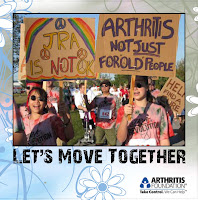
I’m nursing a hangover of sorts. Not the kind preceded by an evening of tequila shots and dancing. This is a different kind of hangover – the kind where the fun comes after the headache and nausea – not before. It’s what I fondly refer to as the Methotrexate Hangover.
I know plenty of people who take Methotrexate. Many suffer no side effects. I am not one of them.
Today’s side effects are unusually severe – blinding headache, nausea rivaled only by pregnancy, exhaustion, the inability to do anything productive. I take my MTX on Thursday evenings after dinner, and on a typical Friday, I’m more fatigued than usual, with a mild headache and a little queasiness. But on occasion, the meds affect me more or less than the average. Today is a more day.
On the whole, these days don’t bother me anymore. I have learned to accommodate them; to be flexible with my own routine. I am aware that anything scheduled on a Friday may have to be postponed or cancelled. I am also aware that some Fridays, I feel almost fine. The question is: do we gripe, complain, and hate life because our meds have side effects? Or do we slow down on those days, thankful to have fairly normal movement and minimal pain the remaining six? I choose the latter. I’m enthusiastically willing to sacrifice one day each week, so that I can feel well and productive the rest of the time – especially knowing that I am preventing long term damage and deformity to my joints with this one day.
I don’t know why some weeks are worse than others, or why some people suffer while others don’t. After five years of questioning, I still haven’t found a pattern or a trigger. For me, the benefits of MTX outweigh the risk of side effects. I am content in knowing that I can proactively impact my RA – that I am empowered – by my meds. Even if they make me feel hung-over sometimes.









.jpg)
